Recently updated on October 8th, 2025 at 04:40 pm
When it comes to unmissable travel destinations, the Emerald Isle earns its name with every wild headland, misty valley, and music-filled pub. From coastal views to poetic history and natural wonders, there’s no shortage of incredible things to do. In this guide, we’ve rounded up the 17 best things to do in Ireland—from iconic landmarks to hidden gems—so you can make your trip to Ireland unforgettable.
1. Stand in awe at the Cliffs of Moher
No list of the best things to do in Ireland would be complete without the Cliffs of Moher. Rising over 700 feet from the Atlantic Ocean, these cliffs are a marvel of natural drama and one of the Emerald Isle’s most iconic sights. Stretching for nearly nine miles along the western coast of County Clare, the cliffs provide sweeping views over Galway Bay, the Aran Islands, and even as far as the Maumturk Mountains on a clear day.
Walking the cliff path is an experience that stirs the soul. With every gust of wind and crash of waves below, you’re reminded of nature’s power and Ireland’s rugged beauty. The visitor center is built into the hillside and offers interactive exhibits that explain the region’s unique geology, flora and fauna, and cultural significance. Don’t forget to pause at O’Brien’s Tower, a 19th-century stone tower perched near the highest point. Visiting at sunset offers an unforgettable glow over the Atlantic, and during spring and summer, puffins and seabirds nest in the cliffside.
Take a guided walk with a Local Specialist on Day 3 of the Irish Highlights tour, learning about conservation efforts going on at the cliffs


2. Discover the ancient secrets of Newgrange
Nestled in the Boyne Valley, Newgrange is not just one of Ireland’s most important historical landmarks—it’s one of the most mysterious. This passage tomb dates back over 5,000 years, predating even the pyramids of Egypt. Circular in shape and lined with engraved kerbstones, Newgrange was built with incredible precision. On the morning of the winter solstice, a beam of sunlight travels down the narrow passageway, illuminating the burial chamber within. It’s a moment that continues to captivate scientists, archaeologists, and spiritual seekers alike.
But Newgrange is more than just a tomb—it’s a window into a prehistoric society deeply connected to nature, astronomy, and ceremony. Surrounding sites like Knowth and Dowth are equally intriguing, forming a wider Neolithic complex that has earned UNESCO World Heritage status. The lush surrounding landscape is dotted with other ancient monuments, from standing stones to early Christian ruins, which paint a picture of Ireland as a cradle of early civilization.
Curious about more sites like this? Here are 12 fascinating sites to explore in Ireland’s Ancient East.
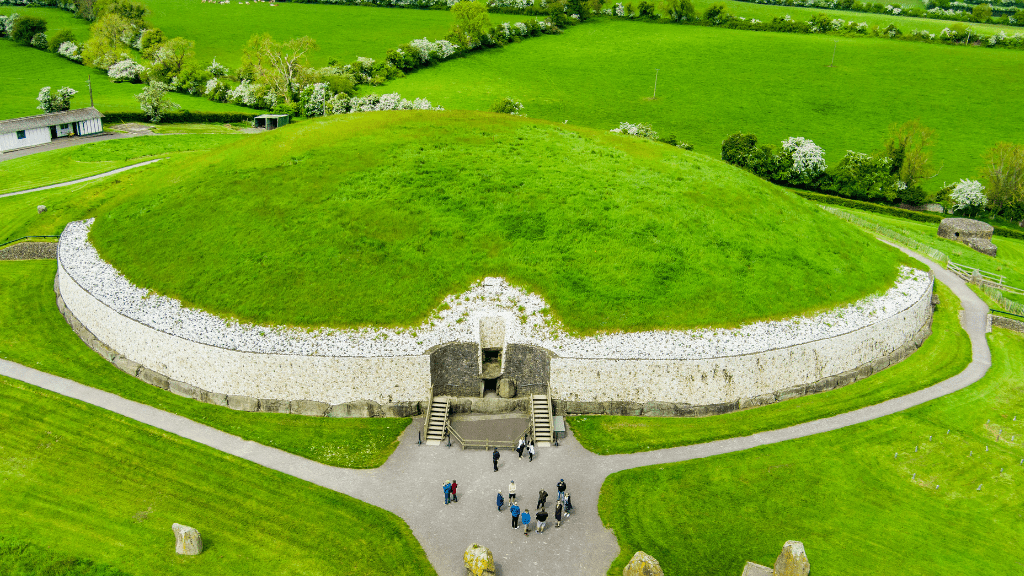

3. Drive the legendary Ring of Kerry
The Ring of Kerry is one of Ireland’s most scenic and celebrated drives, winding through 111 miles of dramatic coastline, mountains, lakes, and ancient ruins in County Kerry. This circular route starts and ends in the town of Killarney and takes visitors through charming towns like Kenmare, Sneem, Waterville, and Cahersiveen, each offering something unique—from artisan shops to centuries-old churches and traditional pubs.
Driving the Ring of Kerry feels like stepping into a living postcard. The route hugs the shoreline in parts, offering breathtaking coastal views, while inland stretches pass rolling green pastures dotted with grazing sheep and medieval ruins. A stop at Ladies View—a scenic overlook so named because Queen Victoria’s ladies-in-waiting once praised the spot—gives you sweeping views of Killarney National Park below. Another highlight is Muckross House and Gardens, a 19th-century mansion nestled within the park.
The Ring also gives you access to lesser-known gems, such as the Skellig Ring and Valentia Island, home to the prehistoric Tetrapod Trackway and dramatic lighthouse.
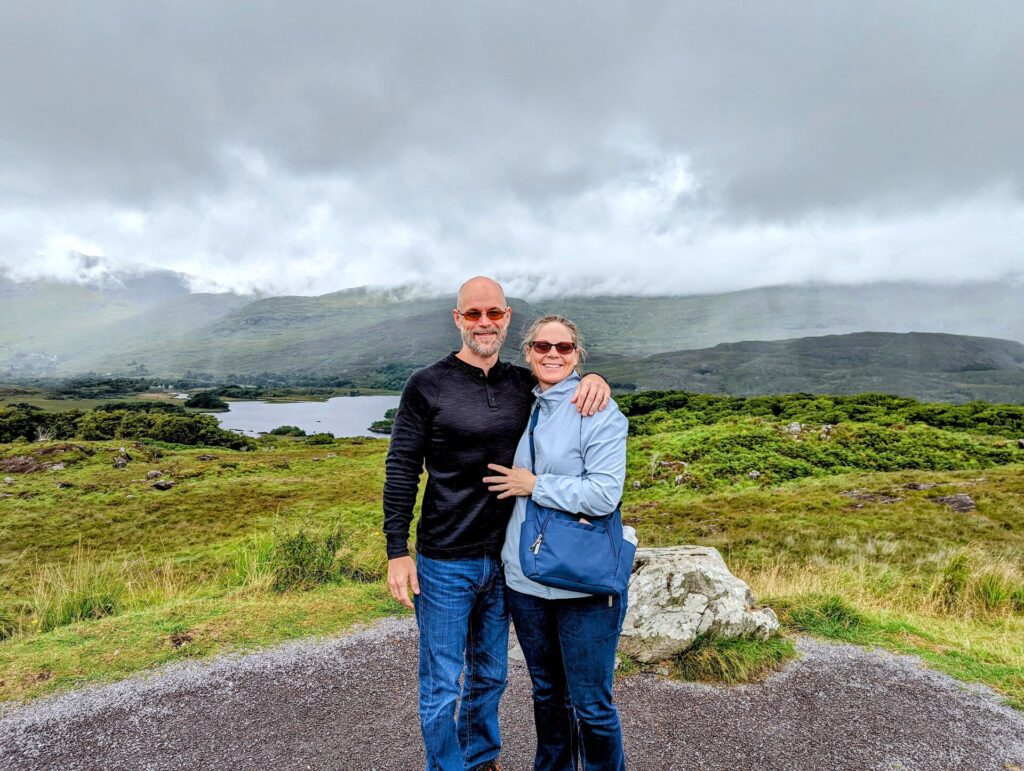

4. Explore the eerie beauty of Giant’s Causeway
Situated on the north coast of Northern Ireland, the Giant’s Causeway is a surreal landscape of hexagonal basalt columns formed by volcanic activity more than 60 million years ago. According to Irish mythology, it was built by the giant Fionn mac Cumhaill to cross the sea to Scotland – hence the name. There are over 40,000 interlocking stone columns here, most of them perfectly geometric. Walking along the cliff path or venturing down to the shore, you’ll see formations with nicknames like the Chimney Stacks, the Wishing Chair, and the Organ Pipes. The surrounding cliffs are alive with seabirds, and the views out to sea are dramatic and ever-changing. The visitor center offers a deeper dive into the geological and mythical origins of the site, complete with interactive displays and storytelling. A visit here is a vivid reminder of how nature and legend intertwine on this island, making it one of the top natural wonders in Ireland.
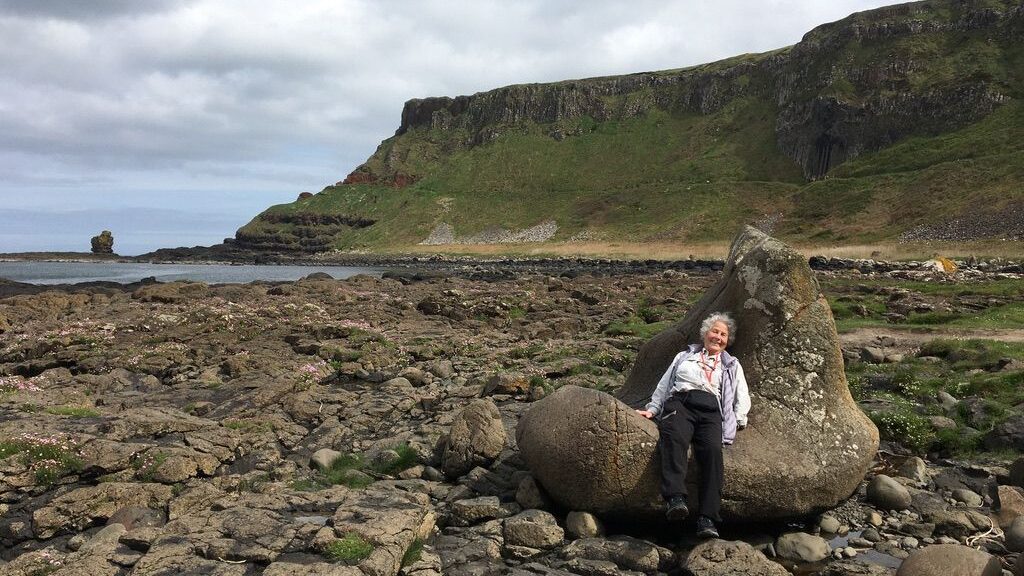

5. Taste the world’s freshest oysters in Galway
Galway is a city that effortlessly fuses Ireland’s artistic energy with age-old traditions, and there’s no better place to appreciate this than along the docks where Galway Bay’s salty breeze meets the sounds of local musicians. Known for its rich culinary scene, Galway takes great pride in its oysters—especially during the Galway International Oyster and Seafood Festival, one of the longest-running food festivals in the world. Here, you can sample fresh native oysters served with lemon, pepper, or just as they are—perfectly briny and creamy. But it’s not just about food, make sure to stroll along the Salthill Promenade for sweeping coastal views. Galway’s energy is infectious: colourful shopfronts, street performers, and friendly locals make every corner of this west coast city a joy to explore.
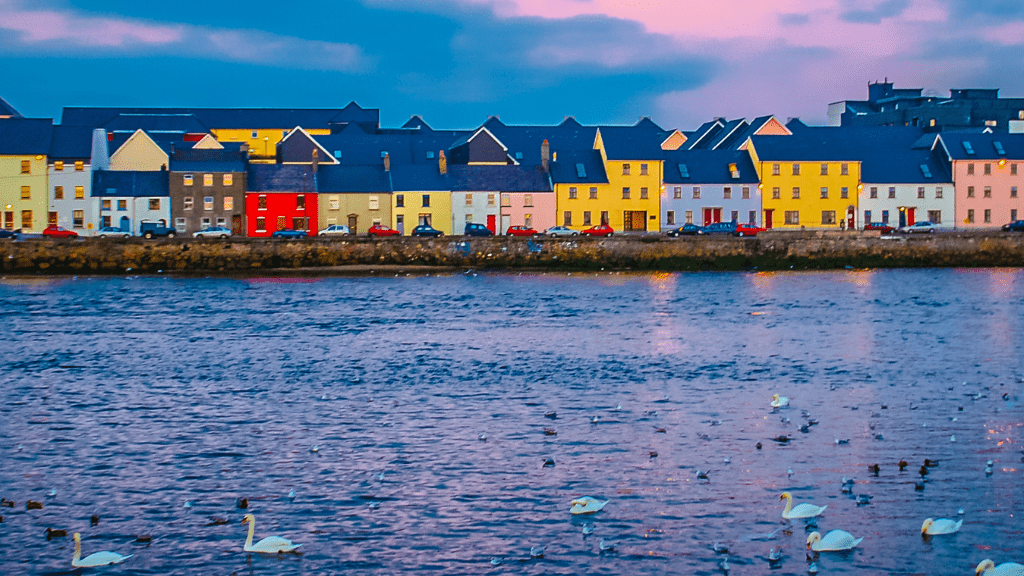

6. Visit the Guinness Storehouse in Dublin
The Guinness Storehouse isn’t just a museum—it’s a multi-sensory deep dive into the story of one of the world’s most iconic beers. Spread across seven floors in the heart of the St. James’s Gate Brewery, the Storehouse brings the Guinness story to life with interactive exhibits on brewing, branding, and Irish history. You’ll even learn how to pour the perfect pint with a certified “Guinness Academy” session.
End your visit at the Gravity Bar, perched atop the building with 360-degree views of Dublin. Your visit gives an immersive way to connect with a drink that’s inseparable from Ireland.
Want to go deeper? Read our history of Ireland’s national drink.
7. Step inside Kilmainham Gaol
A visit to Kilmainham Gaol is a sobering and unforgettable experience. Once home to political prisoners and revolutionaries, this former jail in Dublin offers a raw look at Ireland’s struggle for independence. Walking through the stone corridors and empty cells, you can almost hear the echoes of Irish history—most notably the 1916 Easter Rising, after which several leaders were imprisoned and executed here.
The guided tours are led by passionate experts who share personal stories and context that deepen your understanding of Ireland’s journey toward self-rule. The restored Victorian wing, with its haunting iron balconies and high windows, is a photographer’s dream and a poignant reminder of the human cost of freedom.
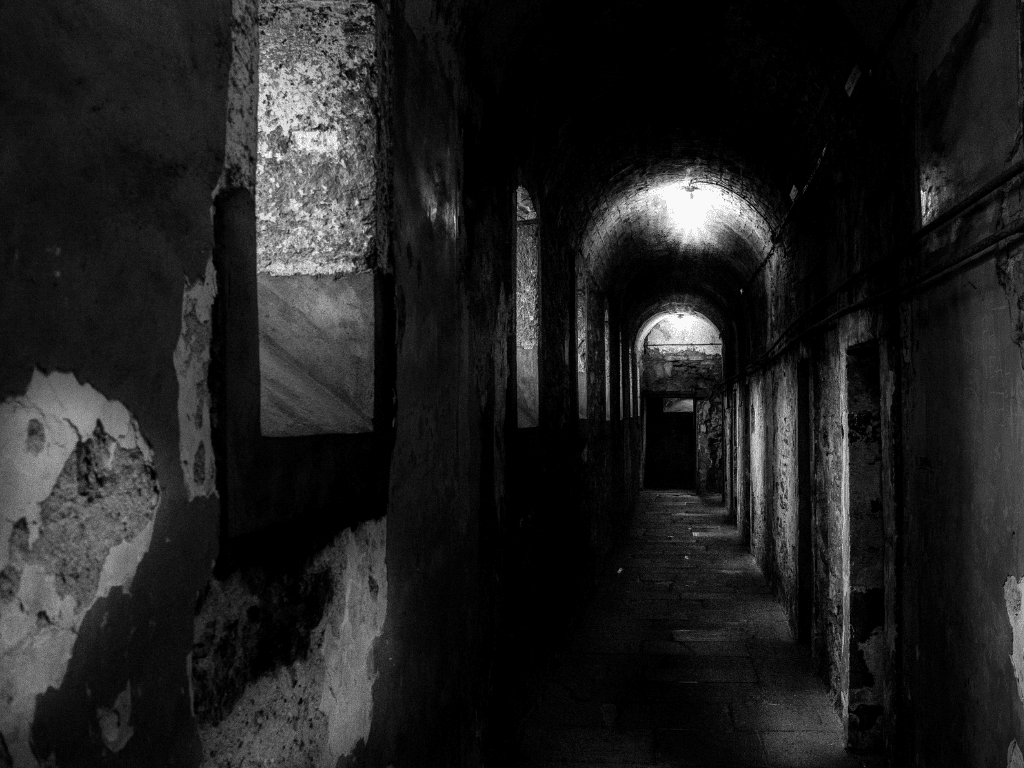

8. Live like royalty in Ireland’s castles
There’s something uniquely enchanting about staying in a grand castle, which is actually possible on the Castles and Manors tour. For example, you’ll rest your head in The Lodge at Ashford Castle, a luxury country estate that blends modern comfort with centuries of heritage. From antique furnishings and four-poster beds to sprawling gardens and views over Lough Corrib, it’s a chance to step into Ireland’s aristocratic past—without sacrificing an ounce of comfort. Later in your journey in the West of Ireland, you can visit the stately 18th-century Westport House where you’ll enjoy a Traditional High Tea hosted by the Hughes family. Set in the elegant drawing room, you’ll savor flavours like banoffee and Baileys, all while hearing stories about the home’s history and its links to the legendary Pirate Queen, Grace O’Malley.
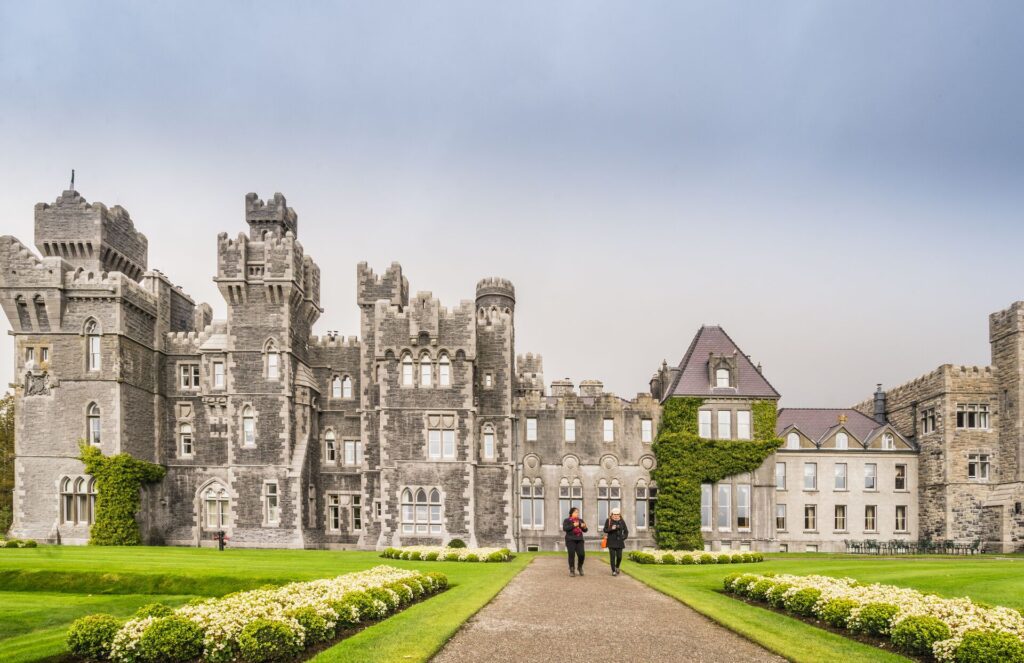

READ MORE: The ultimate guide to the most beautiful castles in Ireland
9. Sail to the remote Skellig Michael
Skellig Michael, a craggy island off the coast of County Kerry, rises dramatically from the Atlantic and seems almost too mythical to be real. Once home to a group of ascetic monks, the 6th-century monastery clings to the island’s steep cliffs and is reached only by climbing over 600 steps carved into the stone. The sense of isolation and spiritual dedication is palpable.
In recent years, the island gained global fame as a filming location for the Star Wars sequels, but its true magic lies in its untouched, otherworldly feel. Only a handful of visitors are allowed each day during the summer season, making the journey not just scenic—but sacred.
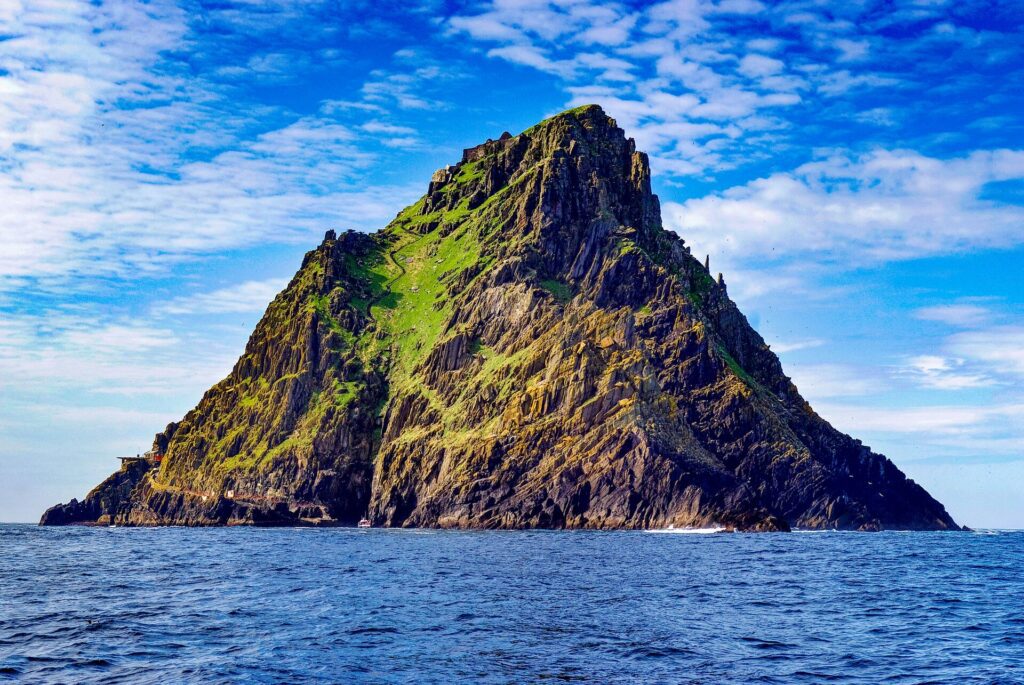

10. Climb Carrauntoohil, Ireland’s highest peak
Adventure seekers, take note: Carrauntoohil, at 3,406 feet, is the tallest mountain in Ireland. Located in County Kerry within the MacGillycuddy’s Reeks range, this climb is not for the faint-hearted but offers breathtaking rewards for those who take it on. The Devil’s Ladder is the most popular (and aptly named) ascent route, though there are gentler options depending on experience.
From the summit, you’ll be treated to panoramic views of lakes, valleys, and green ridges that stretch toward the Atlantic. On clear days, the sense of vastness is humbling, and even in mist or drizzle, the atmosphere is pure Irish magic. Just be sure to bring proper hiking gear and check conditions before setting off.
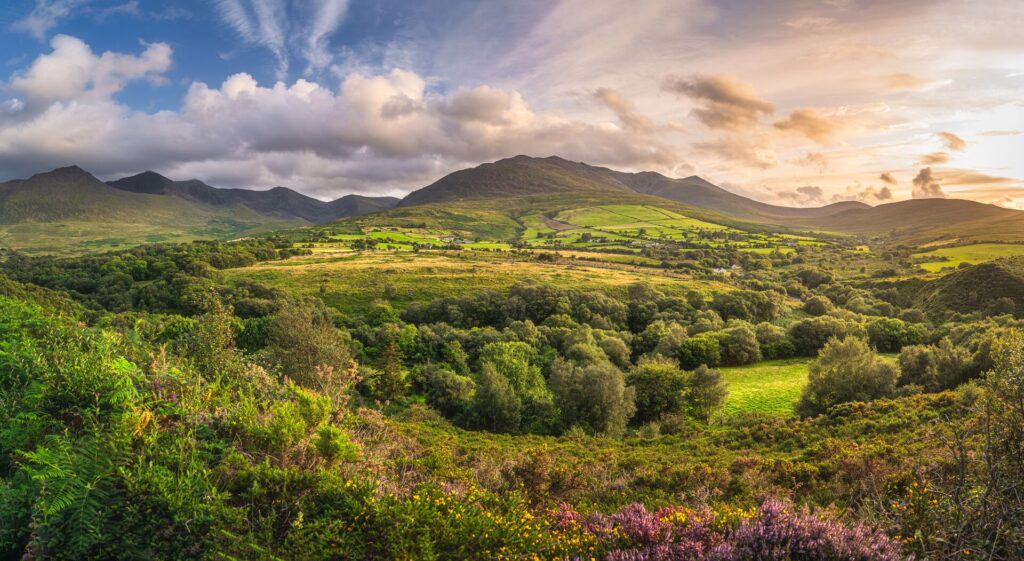

11. Discover the mystique of the Aran Islands
Just off the coast of Galway Bay lie the Aran Islands: Inis Mór, Inis Meáin, and Inis Oírr. These rocky outposts feel frozen in time, where horse-drawn carts are still common and Irish is often spoken as a first language. Stone walls crisscross the fields, and ancient forts like Dún Aonghasa perch on cliff edges with dizzying views.
Renting a bike is one of the best ways to explore these islands. You’ll encounter thatched cottages, remote beaches, and sweeping views at every turn. It’s the kind of place that strips away distractions and connects you with a simpler, more elemental way of life.
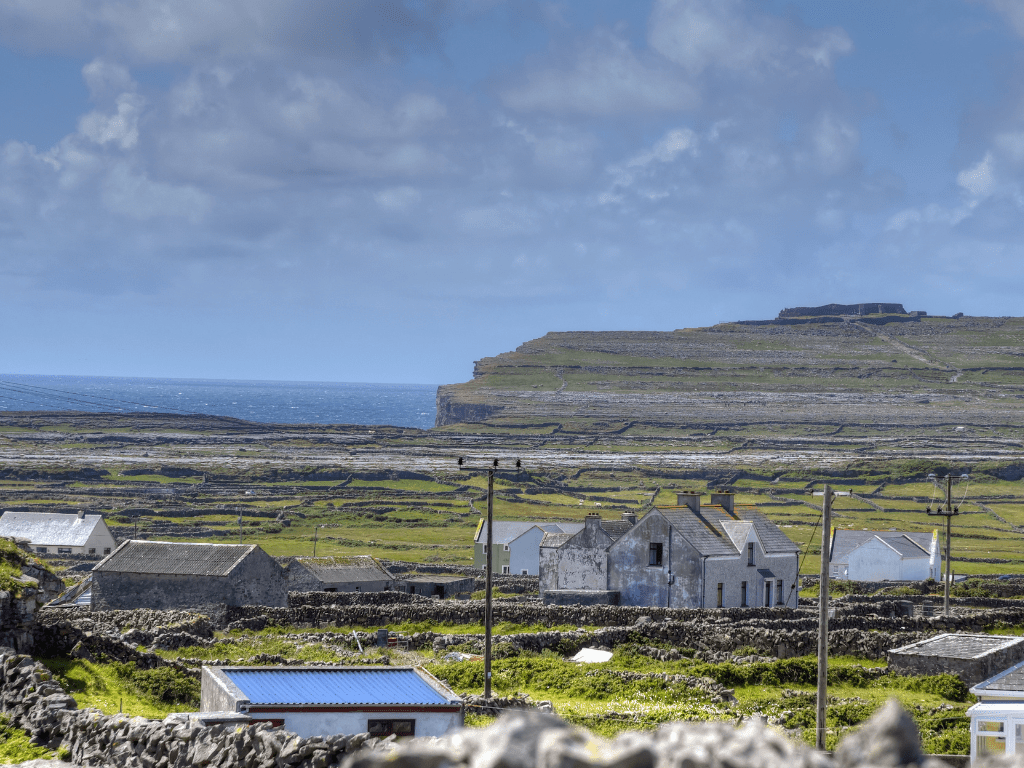

12. Kiss the Blarney Stone at Blarney Castle
It’s a rite of passage for many visitors to Ireland: climbing the narrow spiral staircase of Blarney Castle to kiss the legendary Blarney Stone. Said to bestow the “gift of the gab” on those brave enough to lean backwards over a gap in the battlements, the ritual is equal parts quirky and iconic.
The castle itself is surrounded by lush gardens, including a Poison Garden and a magical Rock Close with ancient druidic stones. Whether you come for the legend or the landscape, Blarney Castle offers a fun, engaging stop for travelers of all ages.
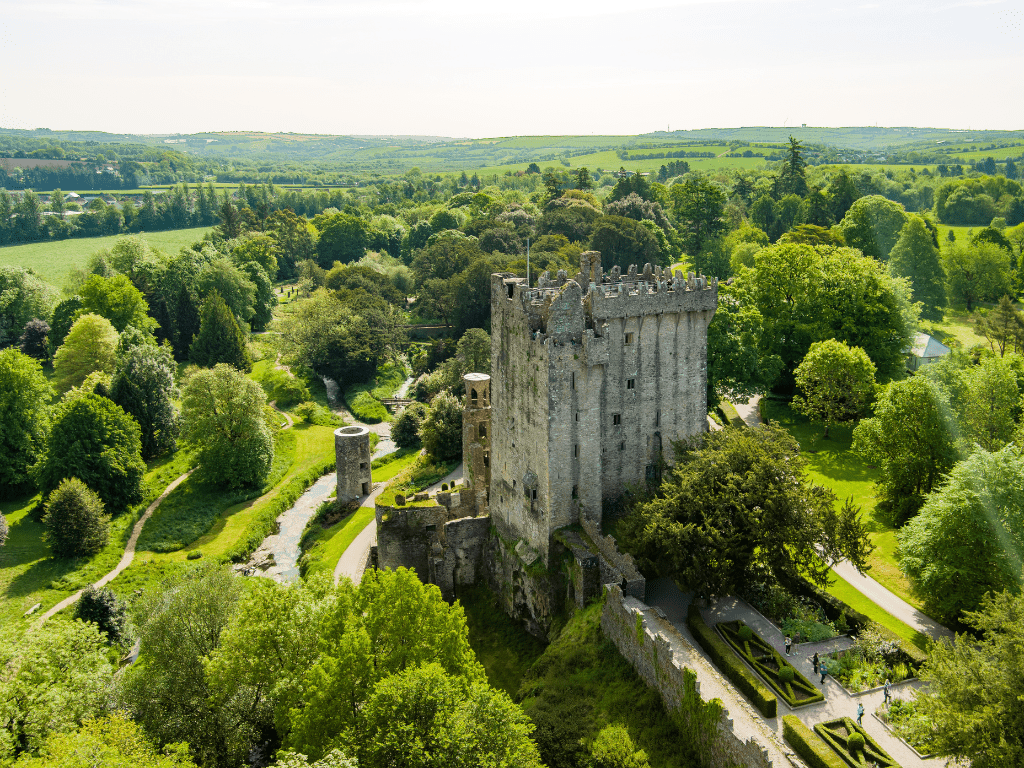

13. Explore The Burren’s strange beauty
The Burren is like another planet—an expanse of pale limestone slabs stretching across County Clare. Cracked and weathered over millennia, this karst landscape is dotted with rare wildflowers, prehistoric tombs, and deep caves. In spring, orchids and alpine plants bloom in the crevices, a vivid contrast to the grey rock.
Despite its sparse appearance, the Burren has been inhabited for thousands of years. Poulnabrone Dolmen, a megalithic portal tomb, is a highlight, as are the remains of Celtic ring forts. Walking the Burren is meditative, quiet, and deeply humbling.
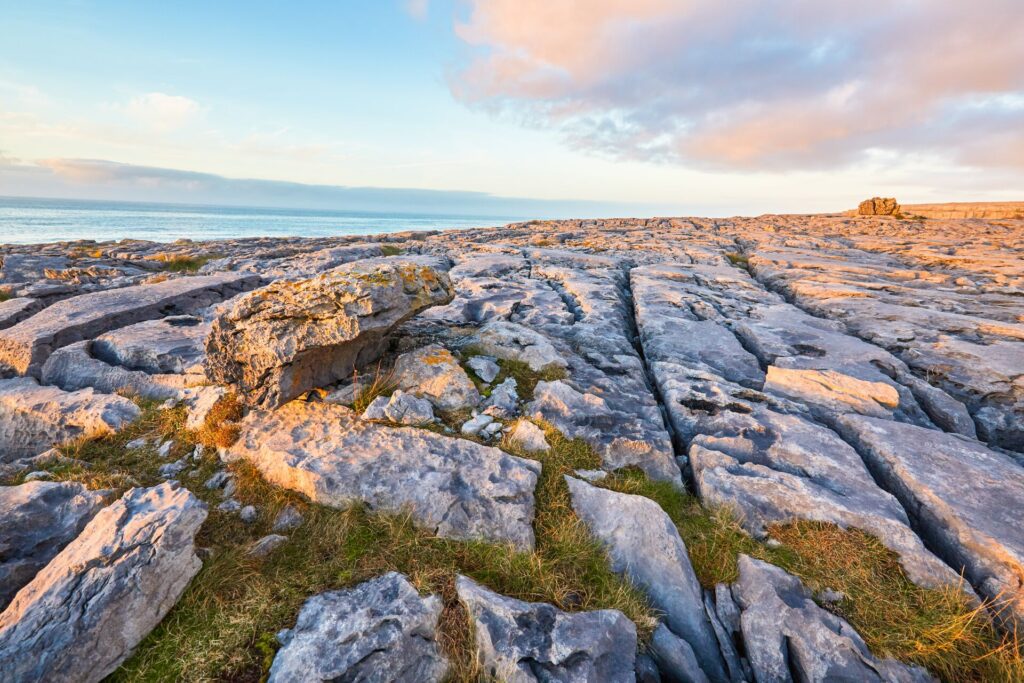

14. Experience a trad session in a traditional pub
No trip to Ireland is complete without an evening spent in a cozy pub, surrounded by locals, a fire crackling, and live traditional music echoing off the walls. Whether in a big city like Dublin or a quiet town in the west, a good trad session is an invitation into the soul of Irish culture. Fiddles, bodhráns, flutes, and banjos weave stories of joy, sorrow, and celebration, often accompanied by spontaneous singing or even a bit of dancing. Order a pint, settle in, and prepare to lose track of time.
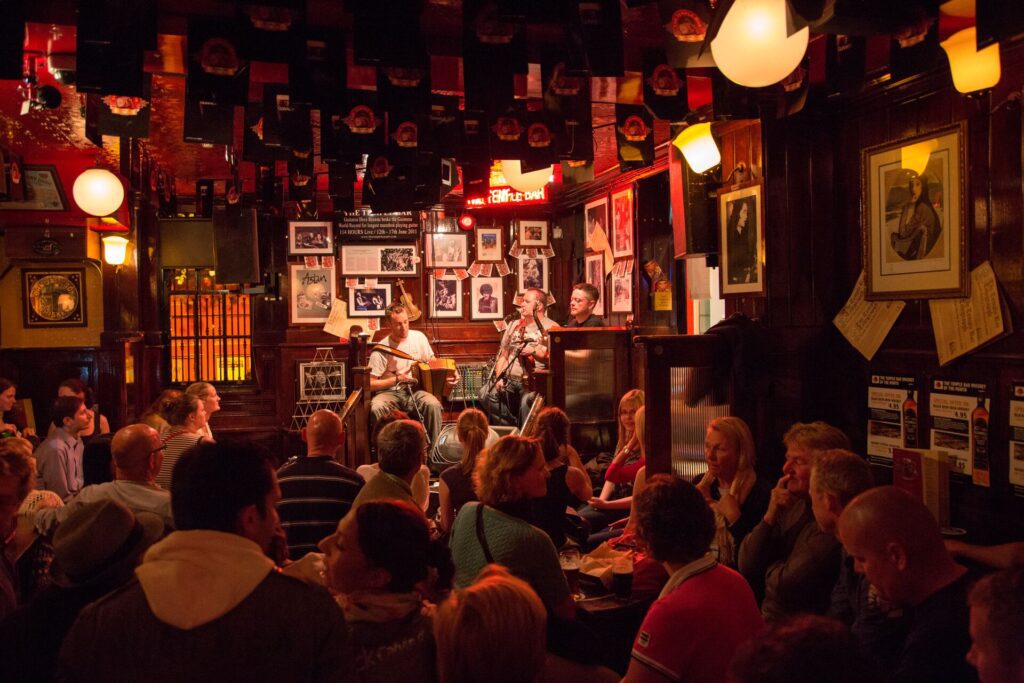

15. Take in the views on Slea Head Drive
Slea Head Drive on the Dingle Peninsula is one of Ireland’s most scenic coastal routes. The narrow road hugs dramatic cliffs, passes ancient beehive huts, and winds through vibrant Gaeltacht villages where Irish is still spoken daily. Along the way, you’ll see endless Atlantic views, crashing waves, and cinematic landscapes used in films like “Ryan’s Daughter.” Stop to see the Blasket Islands in the distance or stretch your legs at Coumeenoole Beach. It’s a sensory feast—and one of the best drives on the island.
16. See Gaelic roots come to life at a traditional show
The origins of Irish culture spring to life over a tour de force of traditional Irish song, music and dance at the Gaelic Roots show. This high-energy performance celebrates the 2,000-year-old Gaelic culture, using traditional instruments, spirited Irish dance, and time-honoured folk songs that have been passed down through generations.
You’ll find yourself tapping your feet, clapping along, and even humming the melodies long after the final bow. It’s an evening out that connects you to Ireland’s rich cultural identity, and one you’ll treasure for years to come.
See a Gaelic roots show on the Britain and Ireland Grandeur tour
17. Walk part of the Wicklow Way
The Wicklow Way offers a peaceful escape just south of Dublin. This 80-mile walking trail winds through misty valleys, forests, and the Wicklow Mountains, offering breathtaking views and moments of quiet solitude. Glendalough, an ancient monastic site with twin lakes and stone towers, is a key highlight.
Whether you walk for an hour or a day, the Wicklow Way delivers a dose of nature, history, and serenity—without needing to travel far from the capital.
READ MORE: Dublin: a cultural gateway to Ireland’s incredible landscapes
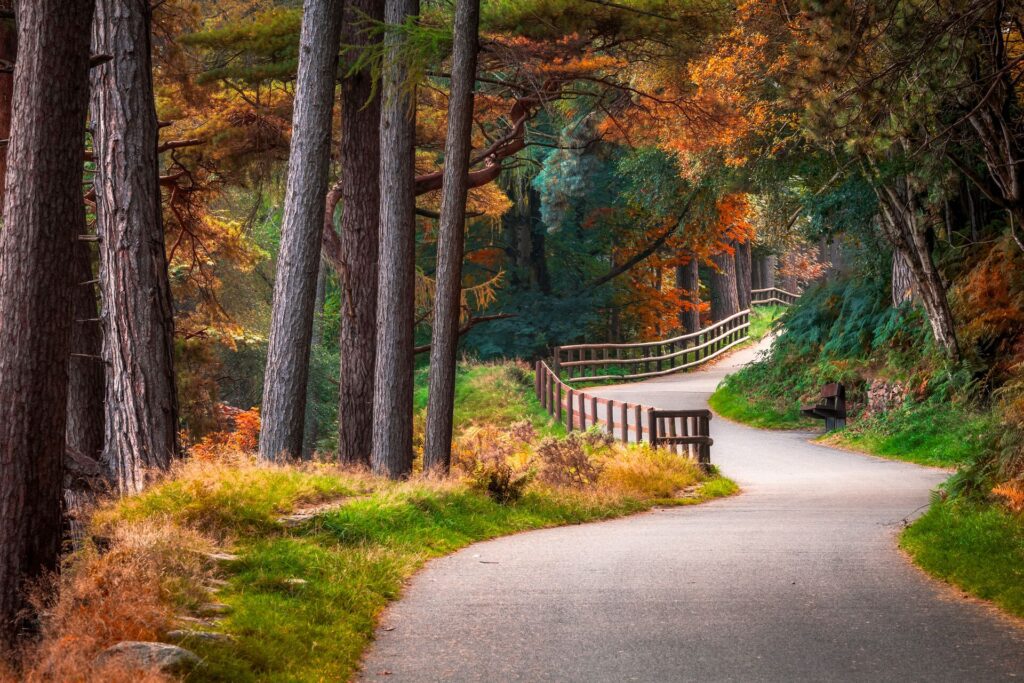

Is 7 days in Ireland enough?
The answer is yes, if you plan wisely so you can take in as much as possible within the week. Luckily, we’ve done all the planning for you in our 7-day Ireland itineraries. You’ll unlock the best of the country in a week, soaking in the sights with everything taken care of; leaving no time wasted without enjoying the beauty of Ireland.
What is the best month to travel to Ireland?
The best month to visit Ireland depends on what you’re looking for. May and September offer mild weather, fewer crowds, and blooming landscapes—perfect for sightseeing. June through August brings warmer temperatures and longer days, ideal for outdoor adventures. For festive charm and fewer tourists, consider March (for St. Patrick’s Day) or October.
What is the #1 thing to see in Ireland?
While there are countless contenders, the Cliffs of Moher are often considered the #1 thing to see in Ireland. Their sheer scale, dramatic beauty, and location along the Wild Atlantic Way make them a must-see for first-time visitors and seasoned travelers alike.